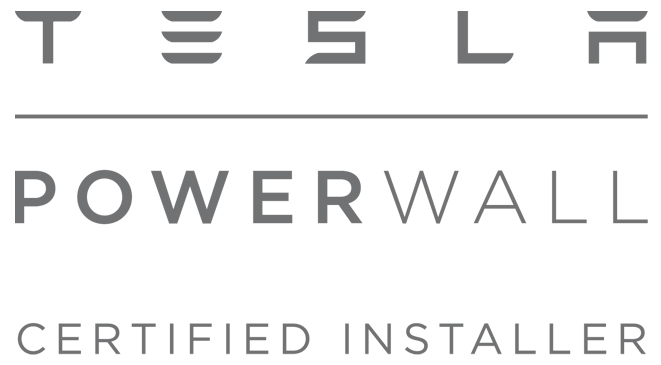OUR ENVIRONMENTAL IMPACT
From cooking meals to flying airplanes, our daily activities require a substantial amount of energy. However, these activities come at a cost, and that ills our environment.
The amount of greenhouse gases that we emit daily is increasing at an alarming rate, and it is high time that we regulate it to achieve this.
This graphic from Our World in Data utilizes data from 2016 provided by Climate Watch and the World Resources Institute to identify the primary sectors responsible for these emissions. In that year, total emissions amounted to 49.4 billion tonnes of CO₂ equivalents (CO₂e).
The sources of greenhouse gas (GHG) emissions can be categorized into four main sectors: energy, agriculture, industry, and waste. Notably, a significant majority of GHG emissions, accounting for nearly three-quarters, can be attributed to our energy consumption.

NET-ZERO DEFINED
But what exactly is “Net Zero Emissions”?
The concept of net zero entails achieving a balance between the amount of greenhouse gases (GHGs) released into the atmosphere and the amount removed from it. Attaining absolute zero emissions, where no GHGs are emitted, can be extremely costly or disruptive for certain sectors. Consequently, the focus is on reaching net zero by both reducing GHG emissions and utilizing methods to remove any remaining emissions. This approach is considered more technologically and economically feasible.
Net zero serves as a long-term strategy for countries or organizations, outlining how and when they intend to achieve a state of net zero emissions. Typically, these targets involve reducing all feasible emissions through technological and economic means, while also addressing any residual emissions. The aim is to align with the objective of limiting global warming to 1.5°C. Several countries have set specific dates for achieving net zero emissions, with some even enacting legislation to make net zero a mandatory requirement.
Other terms to take into account are:
- Greenhouse gases – Gases that absorb and trap heat (infrared radiation) from the sun into Earth’s atmosphere. These gases cause a warming effect. Most commonly refers to these seven gasses: carbon dioxide (CO₂), methane (CH4), nitrous oxide (N2O), hydrofluorocarbons (HFCs), perfluorocarbons (PFCs), sulfur hexafluoride (SF6), and nitrogen trifluoride (NF3)
- Greenhouse gas protocol – There are a number of different approaches to measuring emissions, posing a challenge to businesses. The GHGP is the most recognized GHG accounting standard to categorize, count, and disclose a company’s emissions. It divides emissions into three scopes.
- Carbon Avoidance – Taking an action that prevents CO2 from being released into the atmosphere in the first place. Avoidance projects include renewable energy projects or reducing emissions from deforestation and forest degradation.
- Carbon Negative – Going beyond carbon neutrality, the act of further offsetting the GHG emissions produced by a company whereby an organization removes more CO₂ from the atmosphere than it releases so that its total emissions are net negative.
- Carbon Neutral – The act of offsetting the GHG emissions produced by a company by removing an equivalent amount through carbon avoidance, carbon removal, or carbon offset.
- This means organizations do not necessarily reduce their emissions by an amount consistent with reaching net zero at the global or sector level. Achieving carbon neutrality is typically seen as a critical first step on a company’s longer-term sustainability journey.
- The term climate-neutral may be used to reflect the inclusion of GHGs other than carbon.
- Carbon offset – A way for businesses to compensate for the CO2e emissions they could not reduce in a given year. These are external activities that reduce GHG emissions or increase carbon sequestration.
- These offsets are bought and sold as credits, applying a trading system at a price determined by the market. When purchasing carbon offsets, businesses should look for offsets that are independently validated and verified.
- There are typically two kinds of carbon offset projects: • Nature-based, using plants, trees, soil, or the ocean to remove carbon from the atmosphere. • Engineered solutions, such as CCS and DAC+S
- Carbon removal – The process of capturing carbon dioxide from the atmosphere and locking it away for decades or centuries in plants, soils, oceans, geological features, or long-lived products like cement.
Source: https://www.marsh.com/
OUR NET-ZERO INITIATIVES
To support this vision, countries around the world signed up for the Paris Agreement and pledged to make Net Zero carbon emissions a reality. It’s a tall order, but it’s not impossible.
According to weforum.org, some countries have already taken significant steps toward sustainable practices and environmental conservation:
Bhutan
Subsistence farming, sustainable forestry, and tourism are the main economic activities in Bhutan. The country has prioritized sustainable forestry management over deforestation, with protected national parks covering a substantial portion of its land.
Comoros
This small volcanic archipelago off the east coast of Africa has a population concentrated in coastal towns. Despite being one of the world’s poorest countries, Comoros has achieved a net-zero status by maintaining low emissions from agriculture, fishing, and livestock, and implementing strict environmental protection measures.
Gabon
Gabon, located in central Africa, is largely dominated by Congo rainforests. The country’s commitment to non-deforestation and sustainable resource management has allowed it to preserve its vast natural resources. Gabon is known for emitting minimal carbon dioxide while serving as a significant carbon sink.
Guyana
Situated on the northern coast of South America and surrounded by the Amazon rainforest, Guyana has already achieved net-zero emissions. The country aims to further reduce emissions by 70% by 2030, despite becoming a new oil producer in 2019, which presents a challenge to its status as a net-zero emitter.
Madagascar
As an island off the east coast of Africa, Madagascar relies on agriculture and fishing for its economy. While it is currently a net-zero emitter, deforestation remains a significant concern, with a quarter of its forest cover disappearing since 2000. If deforestation continues at the current rate, Madagascar could become a net carbon dioxide emitter by 2030.
Niue
The small coral island of Niue in the South Pacific Ocean has a local population of around 2,000 people. Fishing, agriculture, and tourism are the main economic activities. Despite contributing only a minimal amount to global greenhouse gas emissions, Niue is vulnerable to the impacts of climate change, such as sea-level rise and cyclones.
Panama
Panama, along with Suriname and Bhutan, formed an alliance of carbon-negative countries at the COP26 climate summit. With a significant portion of its land covered by rainforests, Panama aims to reforest additional land by 2050, solidifying its status as a carbon sink.
Suriname
Suriname, a small Amazonian nation, boasts extensive forest coverage, with a canopy covering 93% of its landmass. The country’s forests play a vital role in absorbing large amounts of CO2 and supporting diverse biodiversity.
These countries demonstrate various approaches and commitments to sustainable practices, environmental conservation, and reducing greenhouse gas emissions.
Most countries pledged to achieve net zero emissions by 2050.
WHAT CAN PEOPLE DO TO ACHIEVE NETZERO?
Humans must cut out carbon emissions and find ways to remove emissions from the air. While the latter seems like a daunting task, we can contribute to this process naturally by planting more trees. Not only do trees remove carbon emissions, but they also provide numerous benefits such as shade, oxygen, and wildlife habitat.
One of our published articles before explains how companies can reduce their emissions.
SETTING A TARGET
The first step to do in achieving net zero at a company level is identifying SMART ( specific, measurable, achievable, relevant, and time-bound) goals. This way, the businesses are able to evaluate if the process is effective.
Also, making everybody informed about the target is necessary so everyone in the company is aware and can act accordingly to the target.
DRAMATIC REDUCTION OF EMISSIONS
After identifying, the next steps will include planning, consulting, and eventually applying NetZero steps.
Some steps included in the reduction of emissions are:
- Measuring your company’s footprint
- Doing the three Rs: reduce, reuse, and recycle
- Choosing sustainable suppliers
- Doing inline Meetings and Events
- Investing in environmental-friendly office equipment
- Using renewable energy
NEUTRALISING EMISSIONS FOR A SUSTAINABLE CHANGE
An effective way to be sustainable and to be close to carbon neutrality is by using renewable energy. Our solar consultants are here to advise and evaluate your company’s energy usage to eventually achieve carbon neutrality which will be a big step towards NetZero.
Another solution is the transition to renewable energy. Renewable energy sources like solar, wind, and hydropower do not produce carbon emissions and can help us cut out carbon emissions.
Governments of countries that signed up for the Paris Agreement are coming up with their policies to achieve Net Zero by 2050. But the responsibility for achieving it falls on every citizen on this planet. No one is exempted, and everybody must participate to achieve this goal. We must change the way we live, and this change starts with you and me.
Imagine a world where we don’t have to worry about the air we breathe or the water we drink. A world where we can enjoy the beauty of nature without the fear of climate change. We all want that world, and we can make it a reality. Let’s work together towards achieving Net Zero emissions and create a better future for ourselves and the generations to come.
What are your thoughts about NetZero? Share them in the comments below.
Interested in making a positive impact? Get your free quotation today.









